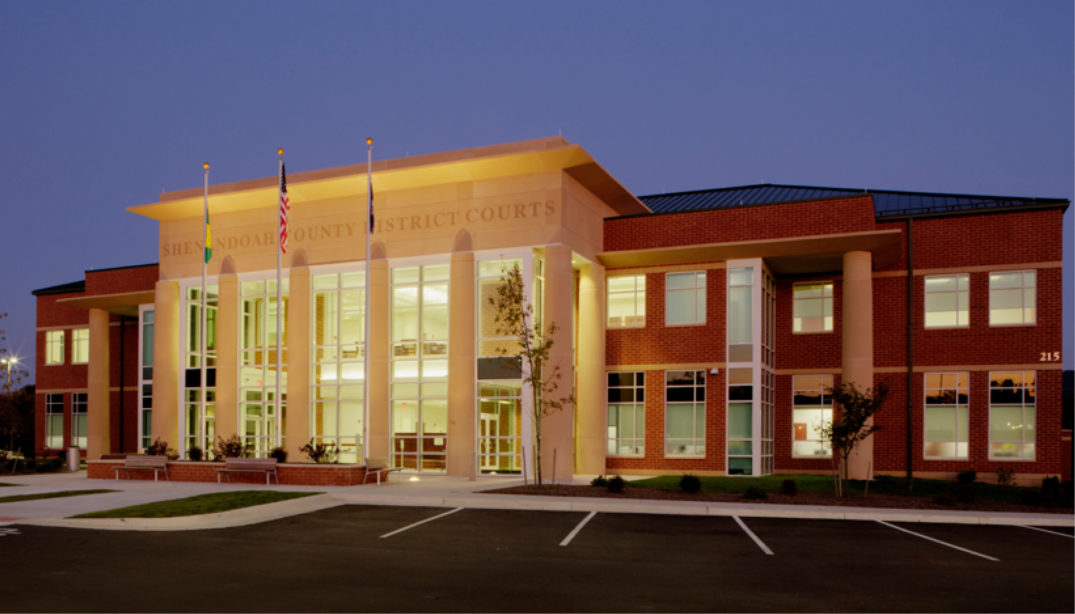
Two recently completed facilities for Shenandoah County have earned Leadership in Energy and Environmental Design (LEED®) certification with the Green Building Certification Institute (GBCI). Located in Woodstock, Virginia, the county’s new Health and Human Services Building achieved LEED Gold and the new District Courts Building attained LEED certification, establishing them among the first LEED buildings in the county.
The Health and Human Services Building is the result of a complete transformation of a vacant, one-story supermarket structure. The walls, floor slab, and foundations of the existing building were reused, and the rest of the facility was renovated and updated to provide space for the county’s social services and health departments, as well as the Community Services Board.
Mary T. Price, the assistant county administrator for Shenandoah County, indicated that pursuing LEED® certification for the projects was important.
“We were primarily interested in energy efficiency, but believe that the steps we took with these public buildings serve as an example to local businesses and industry in the area.”
Mary T. Price, Assistant County Administrator for Shenandoah County
The design team worked with the county in selecting efficient building systems and upgrading the building envelope to reduce energy use by an estimated 28 percent compared to the existing, pre-renovated building. Low-flow plumbing fixtures were chosen that will reduce water consumption by 40 percent, saving approximately 80,000 gallons of water per year. Additionally, skylights and new windows were added to introduce daylight to the interior, reducing the need for artificial lighting and making a more comfortable working environment.
The approach with the new LEED® certified District Courts Building was slightly different given that the project was a new facility. The 30,000-square-foot design blends traditional and contemporary architectural elements to create a unique aesthetic for the county’s general district and juvenile and domestic relations (J&DR) courts. Located near the county’s administration building, the building also features space for the commonwealth attorney and the J&DR court services unit.
Although the jury is still out on whether these two facilities will inspire other building owners and operators to pursue LEED® certification, county employees are responding positively to the facilities. Of particular interest is the courts building’s geothermal ground-source heat pump system. Price cited the subsurface system that provides direct heat exchange and assists the building’s heating, ventilation, and air conditioning system as the most interesting design feature of the District Courts Building. She credits it with the occupants’ increased comfort in their new space and lower utility bills.
Jay Moore, a vice president with Moseley Architects who oversaw both projects, is proud of the results.
“We transformed an abandoned Safeway into an attractive and environmentally-responsible building that serves important community functions.”
Jay Moore, Vice President of Moseley Architects
Nielsen Builders, who was the general contractor on both projects, and Moseley Architects worked to incorporate design and construction strategies that were critical to achieving LEED® certification. Noteworthy features include: using highly-reflective roofing materials to reduce the heat island effect; supporting the local economy by using regionally manufactured materials; and diverting at least 81 percent of construction waste from landfills.
Price commented that the pursuit of LEED® certification for these projects went well.
“I think we have done a good job educating our local media and conducting building orientations with our staff so that everyone understands why LEED® was important. And the staff are enjoying their new spaces.”
Mary T. Price, Assistant County Administrator for Shenandoah County